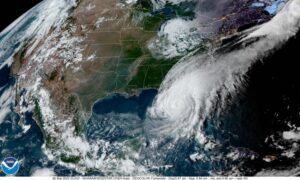 Hurricane Ian will go down in history as one of the worst storms to impact the state of Florida in decades. It devastated the west coast of Florida with near Category 5 winds, torrential and unrelenting rain, plus a whopping 12+ ft storm surge. Like its predecessor, Hurricane Andrew, it caused death and destruction in the billions of dollars. 30 years ago, Hurricane Andrew caused 50 billion in damage, destroyed 60,000 homes, and left 170,000 people homeless. We haven’t had enough time to tally the pain caused by Hurricane Ian, but I’m sure the numbers will dwarf those of Andrew. Most of the areas hit were swamps and mangroves back in the early 1900s until men like Carl Fisher and Henry Flagler etched out their respective fortunes turning these same natural landscapes into concrete and coral stone. We no longer have the protection from mother nature’s palm trees, everglades, and mangroves to protect us. Although newer multi-million dollar homes and buildings are engineered with strength to endure these natural disasters, they seem not as well suited for battle as these weather events get more and more powerful with our ever changing climate and environment.
Hurricane Ian will go down in history as one of the worst storms to impact the state of Florida in decades. It devastated the west coast of Florida with near Category 5 winds, torrential and unrelenting rain, plus a whopping 12+ ft storm surge. Like its predecessor, Hurricane Andrew, it caused death and destruction in the billions of dollars. 30 years ago, Hurricane Andrew caused 50 billion in damage, destroyed 60,000 homes, and left 170,000 people homeless. We haven’t had enough time to tally the pain caused by Hurricane Ian, but I’m sure the numbers will dwarf those of Andrew. Most of the areas hit were swamps and mangroves back in the early 1900s until men like Carl Fisher and Henry Flagler etched out their respective fortunes turning these same natural landscapes into concrete and coral stone. We no longer have the protection from mother nature’s palm trees, everglades, and mangroves to protect us. Although newer multi-million dollar homes and buildings are engineered with strength to endure these natural disasters, they seem not as well suited for battle as these weather events get more and more powerful with our ever changing climate and environment.
Sprawling growth throughout the coastal states over the last 30 years is staggering. The number of homes in Florida doubled from 1990 to 2020 from 5 million to a whopping 10 million homes. Many more people have called “waterfront properties” their homes of choice, exposing themselves to all types of natural disasters like hurricanes and tropical storms. Even our Northern states have seen unheard of devastation like Hurricane Sandy and most recently Fiona. As our population continues to grow, more people than ever are placing their homes and families in harms way. Other hazards throughout the United States are continuing to make the news such as geophysical events like earthquakes, storms, tornados, and forest fires.
We are far from innocent or powerless in the fight against these catastrophic events, but we sometimes act too slow or don’t do enough. In fact, we play a critical role in our own decisions of where to live and what level of risks we are willing to take. We do have the power to impact the very climate changes that threaten the dream lives we have made for ourselves. In our next weeks blog post we will share some figures on the damage to our aviation community caused by Hurricane Ian, what role our company can serve to help avoid damage to our Aviation assets, and more importantly helping our clients prepare for future natural disasters to keep them and their loved ones out of harms way. Next post we will discuss how to get out of harms way with a hurricane approaching.
Until the, Be Social, Fly Private! Sign Up Today! Follow us on Instagram Follow us on Facebook
